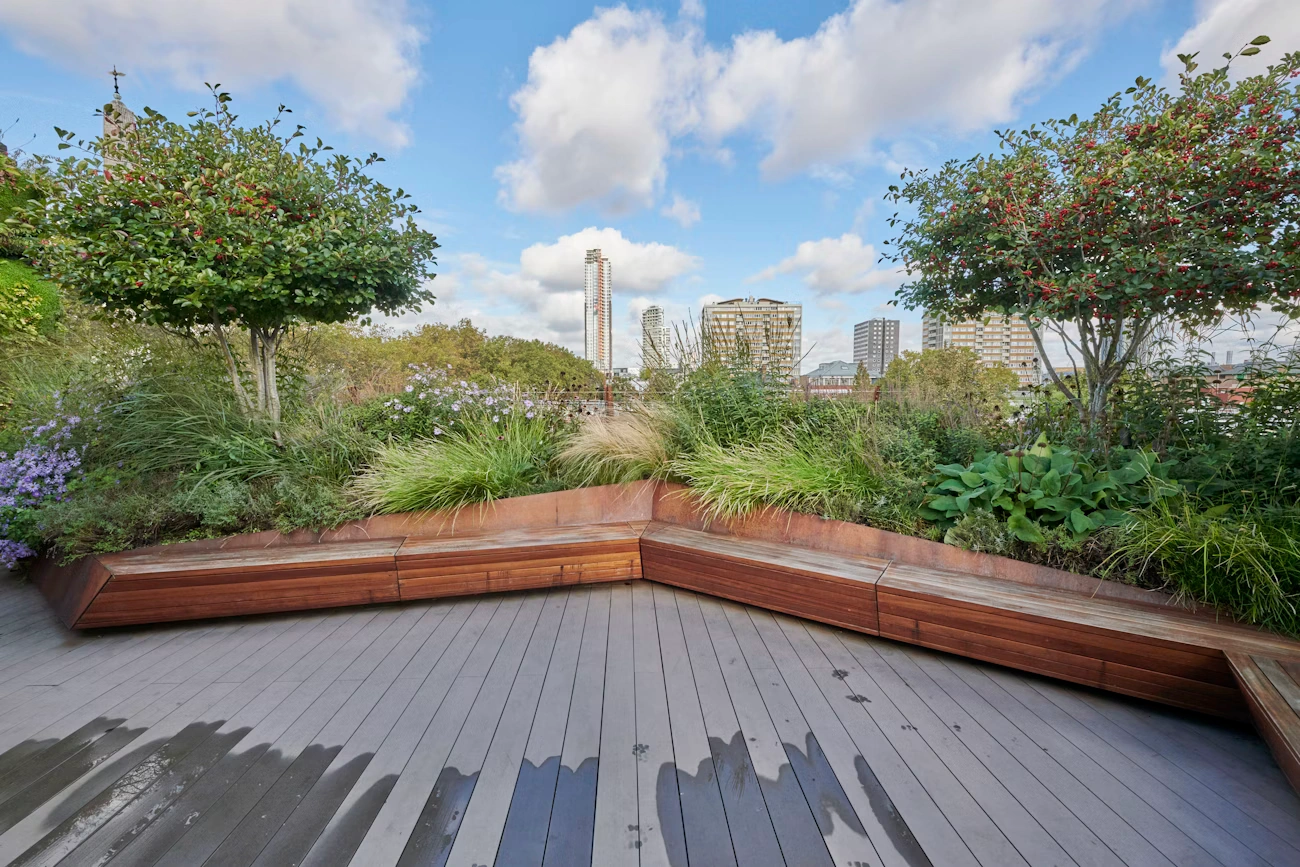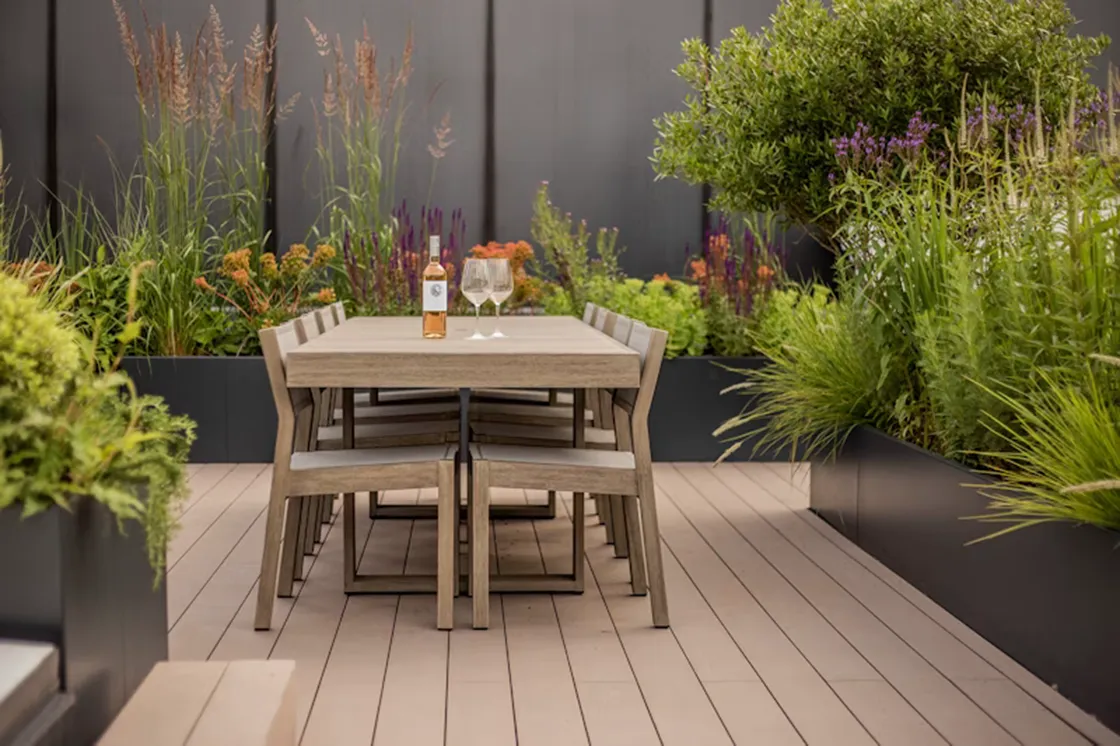Core principles of climate-resilient terrace design
Creating a terrace that can endure the challenges of a changing climate requires more than aesthetic consideration. It demands a strategic, performance-driven approach. Every design decision, from the substructure to the surface finish, plays a role in how well a terrace performs under stress. The following core principles form the foundation of effective climate-resilient terrace design.
1. Drainage is critical
Efficient drainage is the first line of defence against water damage. Without proper water management, heavy rain can pool on surfaces, seep into structures, and lead to costly leaks and deterioration.
Integrating adjustable pedestals and open-joint surface materials helps channel water away efficiently, preventing long-term damage and maintaining surface integrity.
2. Wind uplift mitigation
As wind speeds and storm events intensify, commercial terraces must be engineered to resist uplift forces. Systems designed with wind restraint features, such as fixed pedestals or interlocking pavers, ensure that surfaces remain secure even in extreme conditions. This reduces the risk of displacement or structural failure.
3. Thermal and UV resistance
Constant exposure to sun and fluctuating temperatures can weaken many surface materials.
Choosing UV-stable finishes and thermally resistant materials ensures that terraces maintain their colour, strength and stability over time, even under intense solar exposure or temperature swings.
4. Material selection
Durability starts with smart material choices. Selecting non-corrosive components, rot-resistant decking, and substructures designed for longevity is essential for withstanding moisture, heat, and freeze-thaw cycles.
Sustainable, high-performance materials, such as porcelain, not only last longer but also support environmental goals and reduce lifecycle costs.
5. Modular flexibility
A modular design approach allows for adaptability and ease of maintenance. Systems that can be easily adjusted, replaced or reconfigured provide resilience in both function and form, accommodating future upgrades or changes in use without requiring full reconstruction.
Together, these principles create terraces that balance form and function. They create spaces that not only look exceptional but also endure the realities of a harsher, more unpredictable climate.









